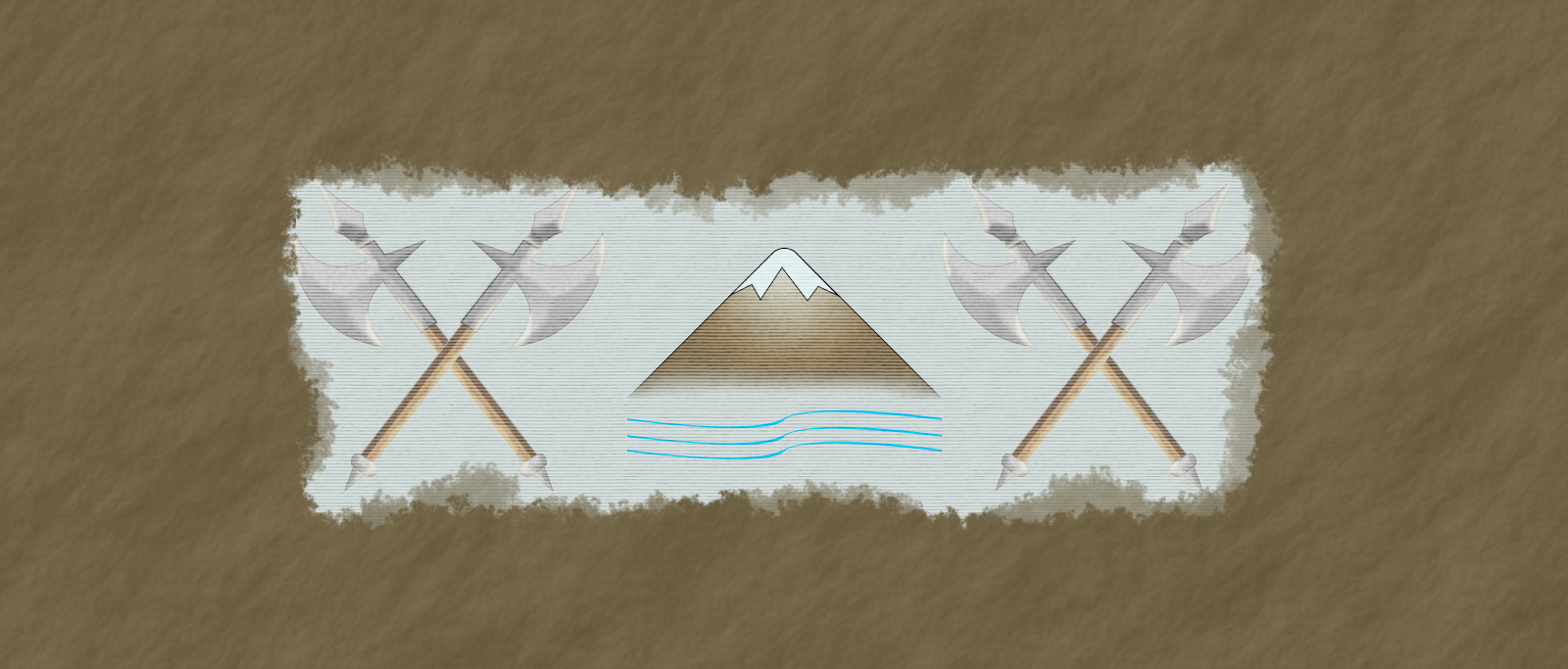From Hills Sunkissed
Where now the hills sunkissed? Where is the green of grass?
Where is the warmth of love, and the light of stars?
Where is the hand over breast, and the coloured banners?
Where is the spring and the harvest and the carpet of flowers?
They have passed like rain on the mountain, like a wind in the meadow;
The hills sunkissed no more; snowy white the hills, blanketed by shadow.
Where shall wander now the knight of truth's long thorn,
And when shall hope return to his downcast eyes forlorn?
When now the hills with red we paint, when now we battle cry,
When now we hunt and praise the gods of war and sky,
When now we remember the knight from hills sunkissed
When he, through snow and strife, travelled north boldly.
His blood was spilled for honour, for love of all hearts true,
Farleze cared not where one came from, nor what one could do.
When he came to Skadi, his shield did not lag, nor his southern sword,
And with both he fought, his heart a Skaden lord's.
With four northern chiefs, four great beasts Farleze fought,
With his valour, honour and might, our safety was bought.
Where snow fades to grass, where warmth dims the slopes,
When laughing at soft-hearted Cetoile and its foolish hopes,
Remember Farleze from hills sunkissed, remember his trials
Remember kinsmen can come from afar, fight all as equals.
From Hills Sunkissed is a Skaden lay concerning Farleze d'Aiglecorce, a Cetoilais knight. The lay is notable because its story accurately conveys the Skaden memory of d'Aiglecorce while contradicting official Cetoilais records. Skaden generally regard the Cetoilais with disdain. This work is one of the few Skaden pieces that celebrate a Cetoilais, albeit through the lens of Skaden identity.
Where is the warmth of love, and the light of stars?
Where is the hand over breast, and the coloured banners?
Where is the spring and the harvest and the carpet of flowers?
They have passed like rain on the mountain, like a wind in the meadow;
The hills sunkissed no more; snowy white the hills, blanketed by shadow.
Where shall wander now the knight of truth's long thorn,
And when shall hope return to his downcast eyes forlorn?
When now the hills with red we paint, when now we battle cry,
When now we hunt and praise the gods of war and sky,
When now we remember the knight from hills sunkissed
When he, through snow and strife, travelled north boldly.
His blood was spilled for honour, for love of all hearts true,
Farleze cared not where one came from, nor what one could do.
When he came to Skadi, his shield did not lag, nor his southern sword,
And with both he fought, his heart a Skaden lord's.
With four northern chiefs, four great beasts Farleze fought,
With his valour, honour and might, our safety was bought.
Where snow fades to grass, where warmth dims the slopes,
When laughing at soft-hearted Cetoile and its foolish hopes,
Remember Farleze from hills sunkissed, remember his trials
Remember kinsmen can come from afar, fight all as equals.

Comments